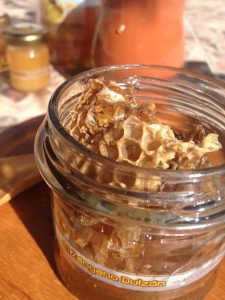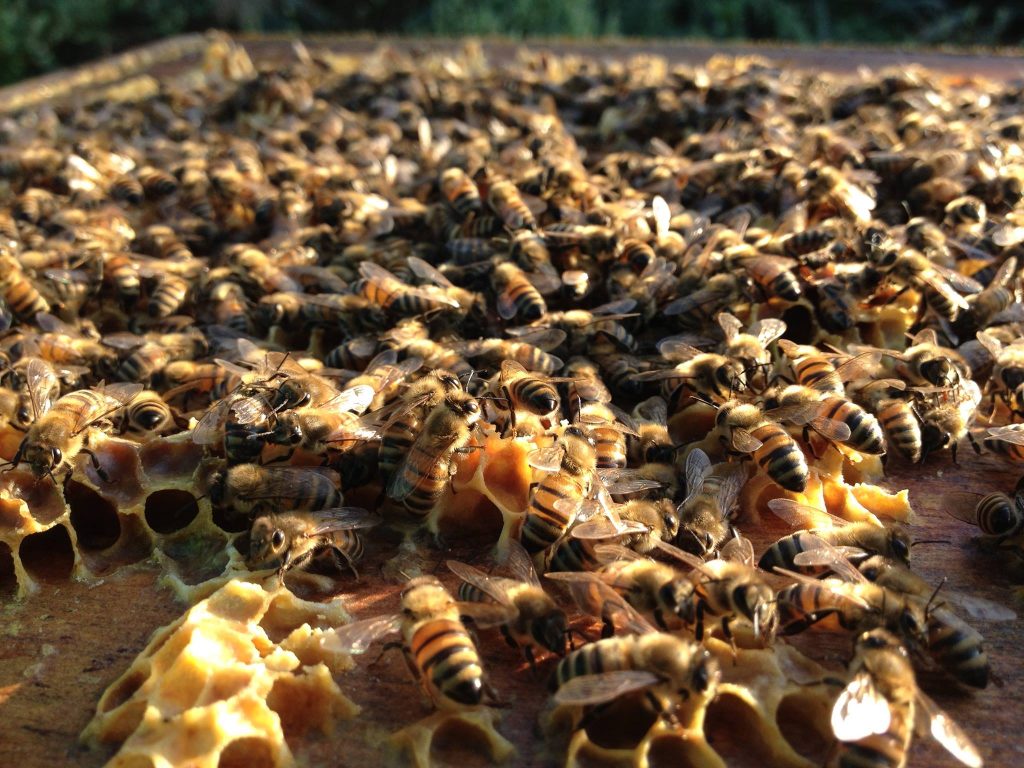Agustin Nervi
“Before they came, nothing happened here. There was no market, nothing…” Claudio whispered as he skillfully drove his trusty F-100 through sandy roads across the wild dry thorny bush that characterizes the Chaco-Santiagueño plains in South America. As we approached his village it was clear I was in for an interesting scene: pigs scaring dogs away to grab a last bite out of recently skinned goats, adobe huts with no doors and barely any windows, and the heat blowing through a huge clearing that resembled a settlement somewhere in the Horn of Africa. We were deep in the heart of the Santiago del Estero province, Northwest Argentina.
I was back in Argentina to conduct research for my master´s thesis on fair trade and organic honey supply chains after a year living close to the ocean and mountains in New Zealand’s South Island. One of these supply chains had been established through a project by an Italian NGO and Coopsol, a honey processor that has been developing apiculture in the Northwest of Argentina for decades. The initiative was largely supported by Italian Cooperation funds and entailed the creation of a beekeepers’ association named APONA (Asociación de Productores Orgánicos del Norte Argentino) to ally with Coopsol and supply Organic honey to consumers in developed countries. Claudio, head of APONA and a beekeeper himself, quickly reminded me of the difference between public services in the poorest Argentine province and the comforts of perfectly maintained routes and hiking trails in my South Pacific haven: “We are too far away. Going out to meetings is difficult because of road access, with the rain, and the distances”. The logo in the Atamisqui flower honey jar Claudio showed me read: “Fairtrade.” Fair Trade certification is meant to help bridge the gap between these very different worlds.
In essence, the Fair Trade (FT) movement is about establishing an alternative market for small producers in developing countries that enables consumers to choose small producers’ products and directly improve the producers’ livelihoods. One of FT´s primary goals is to establish a direct link between buyer and seller. By promoting long-term contracts with growers and a minimum base price (“safety net”) for their production, FT aims to provide a more stable sales channel. FT also brings other benefits, such as the FT premium (an additional income above the FT minimum price to pay for community development) and pre-harvest credit finance.
Beyond my academic focus on value chains, other things struck me when visiting honey producers. During my fieldwork, I found out that many of Claudio´s community members were infected with Mal de Chagas-Mazza, a blood-related disease transmitted by an insect living in adobe huts that causes heart failure, preventing people from living beyond their seventies. About a million and a half people in Argentina are infected with this disease, and 20% of them will develop arrhythmias or heart failure. This disease can be easily cured if detected in the acute stage when inoculation takes place, although this early-bird diagnosis can be hard to achieve in distant villages. In communities like Claudio´s, FT benefits have the potential to make a huge difference like it has for other producer organizations in Argentina, where the FT premium has been channelled towards healthcare and transportation improvements.
In spite of this, some producers find being FT certified hard to justify: a certification doesn’t always work the way we’d hope. In Northwest Argentina, most FT-certified beekeepers were selling their honey as conventional, losing all possible advantages -and close to losing their FT certification because of lack of activity. Beekeepers could not recall any situation where FT´s price safety net had come into play, because conventional honey market prices had always been above that minimum, and only a few honey producers were aware of how FT premium funds were used in their organization. Because those funds didn´t amount to much, they were destined to purchase inputs instead of bigger endeavours.

In addition, the Organic certification that honey producers from Claudio´s association held only suited European standards, restraining their access to North American or British supermarkets that require different Organic certification protocols. When conventional honey prices rose and European FT/FT Organic honey demand fell short, conventional, non-Organic beekeepers were actually making more money, they got better prices and higher yields by using antibiotics to prevent beehive-decimating diseases like varroosis during hot weather streaks, common in this part of the country. Many beekeepers had already lost faith in being certified at all.
In short, Organic beekeepers produced less, but had no offsetting benefits in terms of higher prices. This was obviously not the way things were supposed to work and made me ask: Could some things about the FT certification chain be improved to make it work as intended for these producers? Under these circumstances FT supply contracts appeared to be too “sticky”, with minimum prices rarely updated. The evidence suggested that contracts needed to be better designed as to allow FT honey prices to move in sync with conventional honey prices. That way, FT´s monetary benefits would be more evident to beekeepers, preventing side-selling practices and ultimately resulting in business relationships being more sustainable between them and their certified buyers.
So, do consumers do any good when choosing Fair Trade-certified honey from supermarket shelves? The answer is a cautious ‘yes’, because it’s not all about the price. Many studies done on FT value chains highlight that other benefits besides money are more relevant in improving producers´ conditions: FT and Organic beekeepers highlighted pre-financing inputs, institutional representation and especially market access as being valuable. By working more closely with FT-certified processors who understood the final market, beekeepers in Northwest Argentina were learning how to differentiate their honeys, using smaller beehives to prevent mixing of varieties from different flower blooms during the season. Although there were still miles to go, many of the producers I spoke with genuinely believed in beekeeping, and were hopeful about the future.
“Before they came, nothing happened here. There was no market, nothing…” Through Claudio´s words I learned honey production could somehow provide Claudio and his people the means necessary to overcome some of their hurdles. Increasing FT honey output by improving FT contracts would likely result in enough FT premium funds for community welfare initiatives such as medical check-ups for prevention or detection of diseases like Chagas-Mazza´s. And then, just maybe, increase Claudio´s people’s life expectancy. To make this work consumers need to know about this and choose to buy their honey – and certification can be one way to help tell the story.


